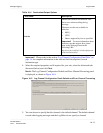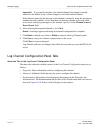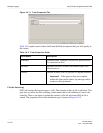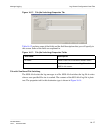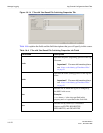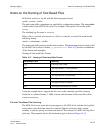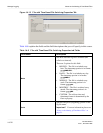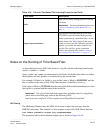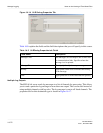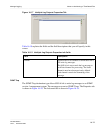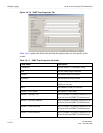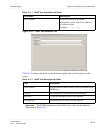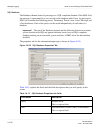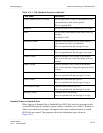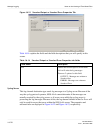
Notes on the Naming of Time Based FilesMessage Logging
............................................................................................................................................................................................................................................................
365-360-001R6.0
Issue 1, December 2008
16-21
............................................................................................................................................................................................................................................................
Notes on the Naming of Time Based Files
As described previously, 8950 AAA writes to a log file with the following name format:
<prefix> + <pattern> + <suffix>
where <prefix> and <suffix> are determined by the Prefix and Suffix field values set within
the Properties tab and <pattern> is evaluated using the current time.
For example, if Prefix is nr, Suffix is.log, and the value of Mode is MONTHLY and the
file is switched at the start of July, 2005, then the name of the file is
nr200507.log.
If the value of Mode is CUSTOM, then the value of the Pattern field determines how often
the log file is switched and the name of the saved file.
Important! For a list of date and time expressions, including rules for using them,
please refer to the Web page found at the following URL:
http://java.sun.com/j2se/1.4.2/docs/api/java/text/SimpleDateFormat.html.
HLR OmLog
The HlrOmlog Channel cause the 8950 AAA server to inject log messages into the
OMLOG subsystem. This channel is a thin wrapper on top of the HLR library function.
com.lucent.packetin.output.Log.outputMessage.
The properties tab for this destination/output type is shown in Figure 16-16.
Suffix
Specifies the suffix (ending) portion of the log
file name.
Important! For more information please see
“Notes on the Naming of Time Based Files” on
page 21
.
Regular Expression Pattern
Specifies the timestamp pattern to use when
CUSTOM is specified in the Mode property.
Enter a pattern using a predefined time- or size-
based format (see Table ) that tells the server
when to create a new file. When the specified
pattern is exceeded, the server creates a new
log file. The old file is given a name that
follows the characteristics listed in
“Notes on
the Naming of Time Based Files” on page 21
.
Table 16-8 File with Time Based File Switching–Properties tab Fields
Field Name Description



